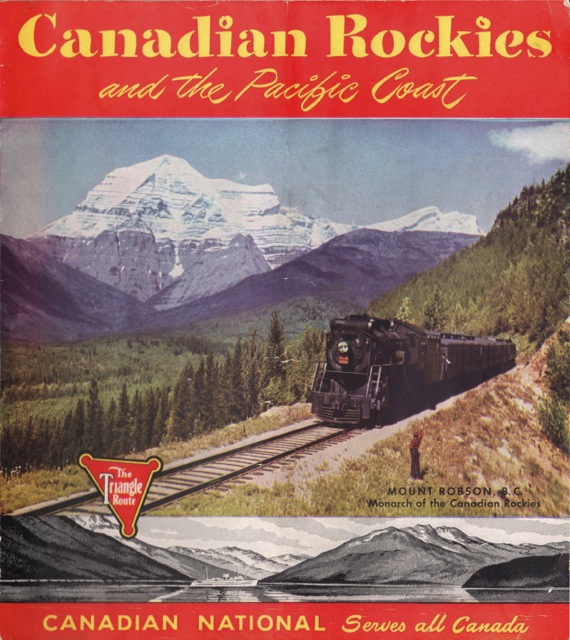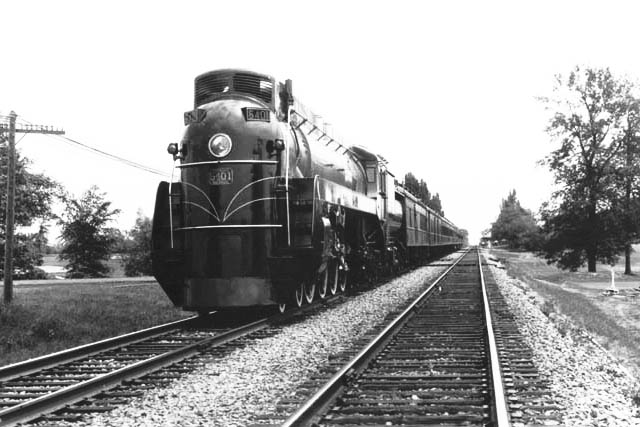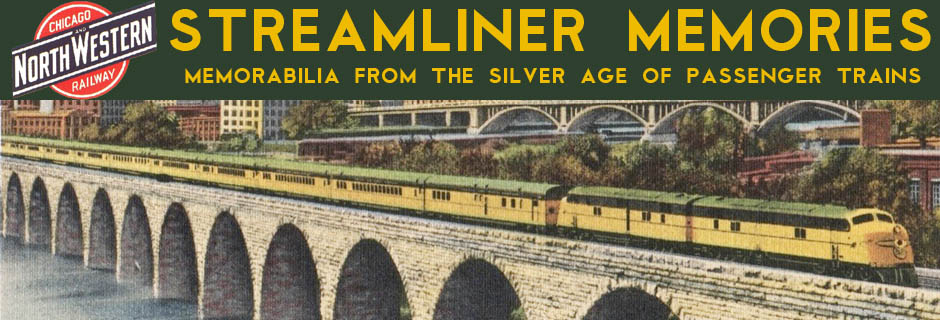Here’s the 1948 edition of Canadian National’s prewar booklet about the Triangle Route between Jasper, Prince Rupert, and Vancouver. CN marketing has completely rewritten the booklet, reusing only a few photos from the 1940 edition. The cover photo is a great improvement as it shows the train and suggests that passengers will get an excellent view of mighty Mt. Robson.
 Click image to download a 13.5-MB PDF of this 16-page booklet.
Click image to download a 13.5-MB PDF of this 16-page booklet.
Aside from the cover photo, there seems to be only one color photo in the entire booklet. This is strange as nearly every page has a four-color illustration or graphic, suggesting the cost of adding more color photos would have been modest.
The locomotive pictured on the cover appears to be one of Canadian National’s 4-8-4 Northerns. Like most major railroads, CN used Northerns for many of its passenger trains; while it had 2-10-2s, they were, for the most part, smaller drivered (meaning slower) and less powerful than Canadian Pacific’s. Canadian Pacific was the only road I know that routinely used 2-10-2s and 2-10-4s for passenger trains, and its ten-drivered locomotives were far more powerful than CN’s Northern.
CN received its first Northerns in 1927, and they were so successful that by 1929 it had 60 of them. The Depression put a stop to orders for new locomotives, and it only purchased ten in 1936. With the coming of the war, however, it bought 90 more.

CN publicity photo showing one of its streamlined Northerns pulling a passenger train.
All but five of the 1936 models were nearly identical in size and specifications to the ones first ordered in 1927, with 73-inch drivers, 250 pounds of boiler pressure and 57,000 pounds of tractive effort. But five of the 1936 order were an experimental streamlined design with 77-inch drivers, 275 pounds of boiler pressure, and 52,000 pounds of tractive effort. Given the lower power and higher drivers (which would be more likely to slip), I doubt these were ever used in the mountains, but one is illustrated on the back cover of this booklet.
